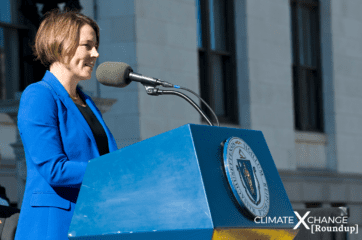The partial government shutdown, which began December 21st over budget disputes for funding a border wall, is now officially the longest shutdown in US history. The President is standing by the fact that it could last “months or even years.”
Beyond the partisan power scuffle in Washington however, the shutdown has many far reaching implications affecting people all over the country, with small businesses being particularly vulnerable. The shutdown has directly affected more than 800,000 federal employees, who have been furloughed or unpaid during this time. Here is a look at 5 ways in which the shutdown has affected small businesses:
1. National Park Economy
 As National Park employees are either out of work or unpaid, one third of parks are completely closed, with the rest severely understaffed. This has not only led to the poor maintenance and even trashing of national parks, but also to less visitors, which has ripple effects on local businesses relying on tourism for their revenue. The National Parks Conservation Association (NPCA) estimates the National Parks Service is losing approximately $400,000 per day from entrance fee revenue, which has compounding costs as the shutdown continues. The economic impacts, however, go beyond just these losses. There are many businesses, such as restaurants, hotels, and local shops surrounding the parks that rely on tourism and park visitors for their revenue. “On an average day in January, 425,000 park visitors spend $20 million in nearby communities,” says the NPCA. Businesses in these areas are therefore also being negatively impacted from the shutdown, experiencing much lower income during this time. There is also no opportunity for lost compensation for these privately owned small businesses, like there is with federal employees.
As National Park employees are either out of work or unpaid, one third of parks are completely closed, with the rest severely understaffed. This has not only led to the poor maintenance and even trashing of national parks, but also to less visitors, which has ripple effects on local businesses relying on tourism for their revenue. The National Parks Conservation Association (NPCA) estimates the National Parks Service is losing approximately $400,000 per day from entrance fee revenue, which has compounding costs as the shutdown continues. The economic impacts, however, go beyond just these losses. There are many businesses, such as restaurants, hotels, and local shops surrounding the parks that rely on tourism and park visitors for their revenue. “On an average day in January, 425,000 park visitors spend $20 million in nearby communities,” says the NPCA. Businesses in these areas are therefore also being negatively impacted from the shutdown, experiencing much lower income during this time. There is also no opportunity for lost compensation for these privately owned small businesses, like there is with federal employees.
2. Loans and Small Business Financing
![]()
The SBA is a government agency that supports entrepreneurs and small businesses to help them grow, and provide them with loans at interest rates that are suitable for them. Being a government agency, the SBA is unable to distribute its loans (except for loans distributed for places hit by severe natural disasters). The agency typically distributes over $200 million worth of loans a day. Weeks into the shutdown, there is a significant amount of money not accessible to these businesses.
“It is important that small businesses who apply for loan guarantees that they are able to get their money. This is going to have a direct impact on the operation of their businesses,” said Nydia M. Velázquez (D-N.Y.), the chairwoman of the House Committee of Small Business.
Small businesses have therefore been some of the most affected by the government shutdown, having faced direct impacts quite rapidly, and most of which will face costly recoveries even after the government reopens. “With SBA closed, there is now a backlog of companies awaiting funding primarily from small banks, Arora (Biz2Credit CEO Rohit Arora) said. “At this point, it will take months for regional banks to recover from this jam and restore the flow capital to small businesses.”
3. Government Contracts
 Many small business federal contractors become dependent on the government for most of their revenue. This means that during the shutdown these businesses are either not able to get paid for such contracts, or get new ones. Shutdowns can also cause contract interruptions and affect business projections and in some, cause serious disruptions to small businesses, having to still fund payroll and other expenses themselves.
Many small business federal contractors become dependent on the government for most of their revenue. This means that during the shutdown these businesses are either not able to get paid for such contracts, or get new ones. Shutdowns can also cause contract interruptions and affect business projections and in some, cause serious disruptions to small businesses, having to still fund payroll and other expenses themselves.
According to the House Committee on Small Business, a shutdown could cause small firms to forgo approximately 6,875 contract actions worth $301,656,083 per day. A shutdown will also cost federal taxpayers as stop-work orders must be issued, resulting in higher costs paid to contractors.
4. Loss of Economic Growth
 The shutdown also has consequences on overall economic growth for the nation. The New York Times reports that the administration calculates the shutdown reduces quarterly economic growth by 0.13 percentage points for every week that it lasts. This means that the economy has already lost nearly half a percentage point of growth from the four-week shutdown. It is a result of the cumulative effects from the loss of income for employees and government contractors, but could well go beyond their own purchasing power.
The shutdown also has consequences on overall economic growth for the nation. The New York Times reports that the administration calculates the shutdown reduces quarterly economic growth by 0.13 percentage points for every week that it lasts. This means that the economy has already lost nearly half a percentage point of growth from the four-week shutdown. It is a result of the cumulative effects from the loss of income for employees and government contractors, but could well go beyond their own purchasing power.
It is likely that economic confidence is undermined as consumers and investors lose faith in leaders’ ability to work on matters of federal budget, debt and trade deals. Therefore, the shutdown could have lasting consequences on growth projections if business and markets begin to expect this could happen again. It does not help that this comes after the volatility already caused by trade conflicts with China. This could be bad news for the president, who has from the very start of his campaign, latched his platform with promised economic growth and prosperity for the country.
5. Commercial Fisheries
 The U.S. Fishing industry contributes about $90 billion to the U.S. economy. Commercial fishermen need federal approval for leasing licenses or “tags” for their fishing vessels. Due to the shutdown, fleets are not operating at full capacity and therefore, are not meeting anticipated catch goals, creating a loss in revenue.
The U.S. Fishing industry contributes about $90 billion to the U.S. economy. Commercial fishermen need federal approval for leasing licenses or “tags” for their fishing vessels. Due to the shutdown, fleets are not operating at full capacity and therefore, are not meeting anticipated catch goals, creating a loss in revenue.
The Federal Commerce Department’s fisheries service has “furloughed key employees that help to oversee commercial fishing operation and the quotas handed out to fishermen that need to be in place and enforced before they can enter the water.” This lack of oversight has a number of negative consequences. In the short-term it can lead to overfishing, and the breeding population will become too depleted and hindering recovery.
Federal NOAA Fisheries, Fishers Statistics Division calculates the annual U.S. seafood consumption, and the impacts of fishing on the environment. Setbacks in compiling in this data could have negative effects in fishing populations, potentially leading to conservative quotas (further hurting the industry).








